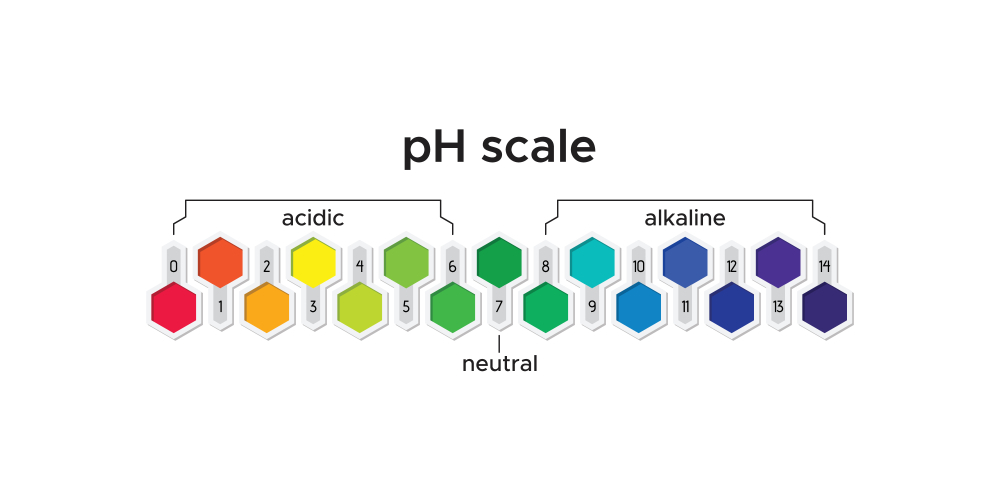Nowadays tea is not just a drink it is a trend and a lifestyle choice across the globe. With so many different types and flavors to choose from, tea has caught on with people all over. But besides all the talk about tea, there’s one question that keeps popping up: Is tea acidic or alkaline?
For those who love their tea and want to know more, understanding the acidity levels in tea is key to enjoying it to the fullest. Let’s move ahead & find a straightforward answer to this question that tea enthusiasts everywhere can appreciate.
What is Acidity and Alkalinity?
Acidity refers to the presence of acidic substances, which have a pH level lower than 7 on the pH scale. These substances typically have a sour taste and can be identified by their reaction to indicators such as litmus paper, which turns red in acidic solutions.

On the other hand, alkalinity refers to the presence of alkaline substances, which have a pH level higher than 7. Alkaline substances often taste bitter and feel slippery to the touch. They turn litmus paper blue.
What Is The Role Of pH Level In Our Body?
In the body, pH levels play a vital role in maintaining overall health. The human body operates within a narrow pH range, with different systems and organs functioning optimally at specific pH levels. For example, blood pH is tightly regulated around 7.4, slightly alkaline, to support essential bodily functions.
When pH levels become imbalanced, it can lead to various health issues, including digestive problems, metabolic disorders, and even systemic inflammation. Therefore, maintaining a balanced pH level through diet and lifestyle choices is essential for promoting overall well-being and vitality.
What Is The pH Of Tea?
When it comes to beverages, the safe pH level for consumption typically falls within a range of 6 to 8. This range ensures that the drink is neither too acidic nor too alkaline, which could potentially cause irritation or discomfort to the digestive system.
Tea, depending on the type and preparation method, can vary in pH. Generally, most teas have a pH ranging from 4 to 6, making them slightly acidic. However, factors such as brewing time, tea type, and additives can influence the final pH of the brewed tea.
Understanding the pH scale is essential to grasp the acidity or alkalinity of substances. The pH scale ranges from 0 to 14, in which 7 is considered neutral. Substances with below 7 pH are considered acidic, while those above 7 pH are alkaline.
Each unit change on the pH scale represents a tenfold difference in acidity or alkalinity. This scale helps us gauge the potential impact of various substances on our bodies and overall health.
Is Tea Acidic or Alkaline?
Tea can be both acidic and alkaline, depending on various factors such as the type of tea, brewing time, and additives. Generally, tea tends to be slightly acidic, with a pH ranging from 4 to 6. However, this acidity is balanced by the alkalizing effects of certain compounds found in tea, resulting in a more neutral impact on the body’s pH balance. Therefore, while tea may possess acidic properties, its overall effect on the body is often considered to be more neutral or even slightly alkaline. Understanding whether the tea is acidic or basic is key to appreciating the true nature of the tea’s pH levels.
Read the recipe and give orange tea shot a try & let us know how much you liked it?
What are the factors that influence tea acidity?
Factors Influencing Tea Acidity:
- Tea Type: Different types of tea, such as black, green, or herbal, have varying levels of natural acidity due to their unique chemical compositions.
- Brewing Time: The duration for which tea is steeped can affect its acidity, with longer brewing times often resulting in higher acidity levels.
- Water Quality: The pH level and mineral content of the water used to brew tea can influence its overall acidity.
- Growing Conditions: Environmental factors like soil composition, altitude, and climate can impact the acidity of tea leaves during growth and harvesting.
- Processing Methods: The methods used to process and oxidize tea leaves can affect their acidity, with certain processing techniques preserving or enhancing acidity levels.
- Additives: Ingredients like lemon juice, milk, or sweeteners added to tea can alter its pH and acidity profile, creating a more acidic or alkaline beverage.
Effects Of Acidic Tea On Health
Acidic tea impacts our health in many ways and the most important ones are listed below:
- Dental Health Implications: Acidity in tea can erode tooth enamel over time, leading to an increased risk of tooth decay, cavities, and sensitivity.

- Digestive Issues: Excessive consumption of acidic tea may exacerbate symptoms of acid reflux, heartburn, and gastrointestinal discomfort in sensitive individuals.
- Bone Health Concerns: High levels of acidity in tea could potentially leach calcium from bones, contributing to bone density loss over time.
- Hydration Challenges: Acidic teas may hinder hydration efforts due to their diuretic effects, potentially leading to dehydration if not balanced with adequate water intake.
- Acid Reflux Aggravation: Acidic tea can trigger or worsen symptoms of acid reflux and gastroesophageal reflux disease (GERD), causing discomfort and irritation in the esophagus.

- Skin Sensitivity: Some individuals may experience skin irritation or exacerbation of conditions like eczema or acne due to the acidic nature of tea, especially if consumed in large quantities.
Is Herbal Tea Acidic?
Herbal teas can vary in acidity depending on the specific herbs used. Generally, most herbal teas are said to be less acidic as compared to normal teas like black or green tea. However, some herbs may impart acidity to the brew, so it’s essential to consider the ingredients when assessing the acidity of herbal tea.
Which Is More Acidic Coffee Or Tea?
When it comes to acidity, coffee tends to have a lower pH level compared to tea. Coffee typically falls within a pH range of 4 to 5, while tea’s pH ranges from 4 to 6. Despite tea being slightly less acidic than coffee, both beverages can potentially impact health.

Coffee’s higher acidity, attributed to organic acids like chlorogenic acid, can lead to more severe health issues such as gastric irritation, acid reflux, and stomach ulcers. However, excessive consumption of highly acidic teas, though less common, can also contribute to dental erosion and digestive discomfort.
Ultimately, moderation is key to minimizing the negative effects of acidity from both beverages on overall health.
Is Tea Acidic For Teeth & Stomach?
Yes, tea can be acidic, which may contribute to dental erosion over time, especially if consumed frequently or in large quantities. Additionally, the acidity in tea can irritate the stomach lining in some individuals, potentially worsening symptoms of acid reflux or gastrointestinal discomfort. However, the extent of these effects can vary depending on factors such as tea type, brewing method, and individual sensitivity.
How to make tea less acidic?
To make tea less acidic, you can try the following methods:
- Reduce Brewing Time: Shorten the steeping time when brewing tea to minimize the extraction of acidic compounds from the leaves.
- Add Milk: Adding milk to your tea can help neutralize acidity, making it smoother and milder on the stomach.
- Use Low-Acid Teas: Choose teas that are naturally lower in acidity, such as herbal teas like chamomile or rooibos, or opt for white tea instead of black or green tea.
- Avoid Citrus Additions: Citrus fruits like lemon or lime can increase the acidity of tea, so avoid adding them if you’re looking to reduce acidity.
- Choose Decaffeinated Varieties: Caffeine can sometimes contribute to acidity, so opt for decaffeinated versions of your favorite teas to minimize acidity.
- Consider Cold Brewing: Cold brewing tea results in a smoother and less acidic flavor profile compared to hot brewing methods. Simply steep tea leaves in cold water overnight in the refrigerator for a refreshing and low-acid alternative.
pH Comparison Of Tea With Other Drinks
When comparing the pH levels of tea to other popular beverages, it’s essential to consider the range of acidity or alkalinity. Generally, tea falls within a pH range of 4 to 6, making it mildly acidic. In comparison, some other beverages vary widely in pH:
- Coffee: Coffee typically has a lower pH than tea, ranging from 4 to 5, making it slightly more acidic.
- Fruit Juices: Citrus juices like orange juice or lemonade can have pH levels as low as 2 to 3, making them highly acidic.
- Carbonated Drinks: Soda and carbonated beverages often have a pH between 2 and 4, depending on the flavor and additives, making them quite acidic.
- Milk: Cow’s milk has a pH of around 6.7, making it slightly acidic, while alternatives like almond milk or soy milk may have different pH levels.
- Water: Pure water has a neutral pH of 7, neither acidic nor alkaline.
Dental Care Strategies for Tea Drinkers
Dental Care Strategies for Tea Drinkers:
- Use a Straw: When possible, drink tea through a straw to minimize contact between the tea and your teeth, reducing the risk of dental erosion.
- Rinse with Water: After consuming tea, rinse your mouth with water to help neutralize acidity and wash away any lingering tea particles.
- Limit Sweeteners: Avoid adding sugar or sweeteners to your tea, as they can contribute to tooth decay and increase acidity levels in the mouth.
- Practice Good Oral Hygiene: Brush your teeth twice a day with fluoride toothpaste and floss daily to remove plaque and prevent decay caused by tea consumption.
- Chew Sugar-Free Gum: Chewing sugar-free gum after drinking tea can stimulate saliva production, which helps neutralize acids and remineralize tooth enamel.
- Schedule Regular Dental Checkups: Visit your dentist regularly for professional cleanings and checkups to monitor and address any dental issues caused by tea consumption.
- Consider Dental Sealants: Dental sealants can provide an additional protective barrier against acids and bacteria for individuals who frequently consume acidic beverages like tea.
Tea Varieties and Their pH Levels
Tea Varieties and Their pH Levels:
- Black Tea: pH range of 4.9 to 5.5
- Green Tea: pH range of 7 to 10
- White Tea: pH range of 4.9 to 5.9
- Oolong Tea: pH range of 6 to 7.5
- Herbal Tea (Chamomile): pH range of 6.5 to 7.5
- Rooibos Tea: pH range of 5.5 to 7
- Peppermint Tea: pH range of 6 to 7.5
Bottom Line
In conclusion, while tea is mildly acidic, its overall impact on health varies based on individual tolerance and consumption habits. For those sensitive to acidity, opting for herbal or white teas and moderating intake can help minimize potential health risks.
Children can consume tea in moderation, but it’s best to avoid highly caffeinated varieties. Despite potential acidity-related concerns, the numerous health benefits of tea make it a worthwhile beverage choice for many.
As always, moderation, good oral hygiene, and mindful consumption are key to enjoying tea while maintaining overall health and well-being.
Hope you liked the information shared in this blog by your tea guide regarding the most asked question – Is tea acidic or alkaline? Read our other blogs from the related posts below.
FAQs
Does tea increase acidity?
Tea can mildly increase acidity in the stomach due to its natural acidic properties, but the impact varies among individuals.
Is tea more acidic than coffee?
Generally, coffee tends to be more acidic than tea, but acidity levels can vary depending on factors such as brewing method and type of tea or coffee.
Is milk tea acidic?
Milk tea may have a slightly higher pH level compared to plain tea due to the addition of milk, which can help neutralize acidity.
Is green tea acidic?
Green tea is mildly acidic, with a pH ranging from 7 to 10, depending on factors such as variety and brewing method.
Is black tea acidic?
Black tea is slightly acidic, with a pH range of 4.9 to 5.5, depending on factors such as brewing time and water quality.
Is ginger tea acidic?
Ginger tea is generally considered neutral to slightly acidic, depending on the ingredients and brewing method.
Does herbal tea cause acidity?
Some herbal teas may be acidic, but others, like chamomile or peppermint, can be less acidic and may even help soothe digestive discomfort.
Is Chamomile Tea Acidic?
Chamomile tea tends to be less acidic and may even have alkalizing properties, making it a popular choice for soothing digestive issues.
Is tea acidic for acid reflux?
While tea can exacerbate symptoms of acid reflux in some individuals, it varies depending on the type of tea and personal tolerance.
Is iced tea acidic?
Iced tea can be acidic, depending on factors such as the type of tea used and any added ingredients.
Is peppermint tea acidic?
Peppermint tea is generally considered to be neutral to slightly alkaline, making it less acidic compared to some other types of tea.
Is chai tea acidic?
Chai tea can vary in acidity depending on the spices and ingredients used, but it is generally mildly acidic.
Is hibiscus tea acidic?
Hibiscus tea tends to be quite acidic, with a pH level ranging from 3 to 4, depending on brewing time and concentration.
Is rooibos tea acidic?
Rooibos tea is typically less acidic compared to black or green tea, with a pH range of 5.5 to 7.
How can I minimize the acidity of tea?
To minimize the acidity of tea, consider opting for herbal or white teas, shortening brewing time, adding milk, or choosing decaffeinated varieties. Additionally, practicing good oral hygiene and consuming tea in moderation can help mitigate acidity-related concerns.







